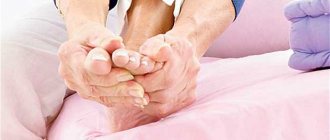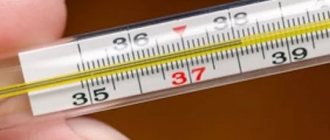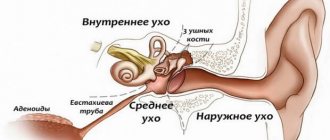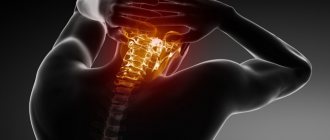( 1 ratings, average: 5.00 out of 5)
Home » Fungal diseases
People of all ages suffer from the problem of ingrown toenails. This disease causes discomfort and, in advanced cases, makes movement difficult. At the initial stages, special ointments, baths, aids and traditional medicine recipes can help.
What is an ingrown toenail
An ingrown toenail is a nail plate that, when exposed to certain factors, has grown into the skin of the nail fold, its side part. At first, the problem of an ingrown toenail may not bother a person much, but after a while the slight inconvenience is replaced by severe pain, inflammation, swelling and redness may form.
Most often, the nail begins to cut into the big toe or little toe. To prevent ingrown toenails, pay attention to the causes that contribute to the problem.
Pain as a signal of the development of onychocryptosis
At the first stages of ingrown nail plate, the patient does not experience severe pain. The skin adjacent to the nail plate begins to swell and acquires a red tint. Sometimes it is possible to establish the presence of onychocryposis visually.
With inaction, infection of the injured area develops over time. The part adjacent to the nail plate swells more and becomes darker.
Note! Purulent discharge can often be observed.
Often it is not possible to immediately detect onychocryptosis
If the infectious disease is not treated, granulations will begin to form over time. This type of soft tissue looks like raw meat.
Onychocryposis can cause a lot of inconvenience. The most obvious is the constant presence of pain in the finger. At the first stage, it occurs only under pressure, then it develops and intensifies, and ultimately becomes an integral companion of the disease.
The finger with an ingrown nail constantly hurts
Causes of ingrowth - why does it happen
There can be several reasons for an ingrown toenail:
- Improper pedicure is one of the main ones. If you trim the edges of your nail too much, there is a good chance that sooner or later it will start to bother you by growing into your foot. It is necessary to cut your nails correctly using rounded scissors, after water steaming procedures that make the nail plate soft. After cutting the nail, carefully file it with a nail file.
- Ingrown nails into soft tissues are often associated with heredity . If your immediate family (mother, father, grandparents) has this problem, then you may also be predisposed to it. Carry out preventive procedures, be attentive to the nails on your big and other toes - this will help avoid the disease.
- A fungal infection of the feet can contribute to the growth of several layers of the nail plate and its ingrowth - then the nail looks yellow and thick. Don't forget about hygiene to protect yourself from fungus.
- Tight, uncomfortable shoes that squeeze the foot where the toes are located, as well as sweating when wearing low-quality shoes, can cause ingrown toenails.
- If you have a serious leg injury , monitor the “behavior” of the nail plate to prevent it from cutting into it.
If you do not notice the symptoms of ingrowth in time and do not prevent the process, you may encounter unpleasant consequences - swelling of the toe, the appearance of wounds, discharge of pus, bleeding, abscess, osteomyelitis, tetanus. Be attentive to your health - and prevention or simple treatment will be enough for you.
- How to remove a diseased nail
- Treatment of fungus on toenails: effective methods and remedies
- The fastest ways to treat nail fungus with medications and folk remedies
Symptoms of the disease
Many people do not consider this phenomenon a disease, however, according to ICD 10 (international classification of diseases), this phenomenon occupies position L20, and in scientific medical language is called onychocryptosis.
If you look at a photo of an ingrown toenail, you can see a standard picture - on one side, which is closer to the index finger, the skin becomes thinner and acquires a red or bluish tint.
In the area of ingrowth, swelling occurs, blood, ichor and pus are released. All this may be accompanied by a strong unpleasant odor. When pressing on this area, a strong throbbing pain is felt.
The most common reasons:
- Wearing shoes made of low-quality synthetic materials
- Wearing high-heeled, narrow-toed shoes of the wrong size
- Wearing hosiery that is not your size
- Contamination, penetration of foreign particles under the skin
- Incorrect cutting method
- Fungal infections
- Genetic characteristics of the body
- Injuries and fractures
- Lack of vitamins and microelements in the body
What to do if your toenails grow into your skin
When the first signs of ingrown nails appear, consult a doctor who will prescribe the necessary treatment for the ingrown toenail. The sooner you do this, the higher the chance that recovery will be quick and painless. Advanced cases require surgical intervention - surgery to remove the embedded part of the nail. Go for a consultation with a specialist, even if you want to get rid of the problem yourself, to rule out the infectious nature of the disease.
What are the contraindications and complications?
The procedure for laser removal of ingrown toenails is not suitable for everyone. There are the following contraindications:
- problems with blood clotting;
- systemic pathologies of soft tissues;
- skin diseases;
- some types of diabetes;
- the presence of an allergic reaction to painkillers.
There are contraindications to this procedure
If you ignore the symptoms of onychocryptosis, serious complications may occur:
- An abscess is suppuration of soft tissues, which is accompanied by swelling, soreness, dark tissue color and elevated body temperature.
- Pyogenic granuloma. In this case, bright red granulations form, blood constantly oozes from the nail fold and pus is secreted.
Pyogenic granuloma may develop if the problem is not treated.
- Ostiomyelitis. In this situation, the infection spreads to the bones and begins to destroy them.
- Lymphadenitis. If the infection seeps into the lymphatic system, an inflammatory process begins in the lymph nodes.
- Gangrene. This is a very serious disease that blocks blood flow and causes tissue death. The only treatment option is invasive intervention.
An ingrown toenail must be treated, otherwise gangrene may develop.
Note! People with diabetes and vascular disease are at risk. During surgery, there is a high probability of developing an infectious infection and subsequent necrosis.
Treatment with folk remedies without surgery
Traditional methods of treatment involve the use of medicinal herbs and available home remedies. If your ingrown toenail does not require immediate removal, try the following home remedies:
- Dilute a little potassium permanganate in hot water. Steam your foot in the resulting solution, then wrap your finger in mashed plantain leaves. Bandage it, put on a sock. The bandage must be changed once a day.
- A decoction with chamomile or St. John's wort will suit you at the initial stage of an ingrown toenail. Pour six tablespoons of chamomile/St. John's wort into two liters of boiling water, let it brew for an hour. Afterwards, strain the broth and heat again. A bath with this decoction will make the nail plate softer. Remove the ingrown part and apply a tampon or bandage. When the nail plate returns to its normal shape, stop treatment.
- Place a fingertip with butter on the problem area in the evening, put a sock on top, and leave until the morning. When the pain stops bothering you, cut out the area of the embedded nail and place gauze on it. Do not trim the nail - let it grow and heal, otherwise a relapse is possible. How to put gauze under the nail, look at the photo:
- Crush one aloe leaf, add thirty drops of water, mix thoroughly. Dip gauze into the liquid, bandage the leg and secure it with cling film on top. In the morning you can easily get rid of the ingrown part of the nail.
- Salt, soda and furatsilin (one tablet per liter of water) baths will help relieve inflammation and promote the natural release of pus.
- An ointment made from boiled ingredients, taken one tablespoon at a time, will help well - garlic gruel, onions, aloe, butter and one teaspoon with honey. This mixture needs to be cooked for several minutes.
- An overnight compress made with Vishnevsky ointment will also help soften the plate. Then you can easily remove the ingrown part of the nail.
If you see that mild pain is being replaced by an inflammatory process, entrust the healing of the nail to a doctor. He will perform a tamponade or place a staple, depending on the severity of the case. Due to a long abstinence from going to a specialist, an infection may get into the injured area. As a result, antibiotic injections will have to be prescribed. It is better to immediately entrust an ingrown toenail to a doctor to avoid unpleasant consequences.
- Complex treatment of toenail fungus with tablets, ointments, folk remedies and baths
- How to quickly cure toenail fungus at home using medications and folk remedies
- How to quickly get rid of nail fungus: effective methods and treatments
Treatment methods
Once the specialist has accurately identified the ingrown toenail, he can suggest several ways to treat it. It can be carried out both in a hospital and at home. Next, we will talk about all the available methods for treating an ingrown toenail and more.
Acrylic correction
This treatment method is more of a preventative measure to prevent the nail from growing into the skin. Correction of an ingrown nail with acrylic is carried out once every six months and is a regular extension. Acrylic lifts the corners of the nail plate, thereby preventing them from penetrating the skin. As a result, discomfort disappears and a neat pedicure appears. Acrylic has greater shrinkage, so it is better suited in this case, although the use of gel as a material for extensions is also acceptable.
Hardware pedicure
This procedure is not only for those who want to get beautiful legs. With its help you can also correct the situation with an ingrown toenail. There are two types of hardware pedicure:
- Cosmetic. This can be done by any pedicurist who knows how to operate the device.
- Medical. The technician must have a medical education and be able to install plates or staples.
For people who are predisposed to ingrown nails, periodic cosmetic pedicures are mandatory. The skin is softened with special means, and the nail plates themselves are polished with different attachments. With their help, rough skin is removed, and the ingrown part of the nail is carefully filed down.
This correction allows you to straighten the direction of nail growth. But it can only be done at the first stage, while the problem area has not yet festered.
Correction with plates
This method can also be called a medical hardware pedicure, but they usually say that this is the correction of an ingrown nail with plates. Depending on the individual characteristics of the client, plates, staples or half-staples made from various materials can be used. Their use will make sense in the first stages of the disease.
The following materials are used to correct an ingrown toenail:
- Podofix plate - made of special plastic, helps correct curled nails, instantly removes pain;
- Combiped staple - one end of it is attached at one angle of the nail, and the second is glued to the surface of the nail (helps to level the nail only from one edge);
- Oniclip plate – controls pressure on the nail, thereby preventing it from growing, can be used after nail removal;
- gold plate goldspang - made of gold-plated jewelry steel, glued to the nail in especially severe cases.
Table “General characteristics of plates and staples for correcting ingrown toenails”
| Advantages | Contraindications | Features of installation and wearing |
| The installation process only takes a few minutes | Presence of a fungal infection | Before installation, anesthesia (local anesthesia) is performed. |
| The patient who has staples or plates installed is not limited in physical abilities (sports); girls can apply nail polish and wear high-heeled shoes | Diabetes | Plates and staples are placed across the surface of the nail |
| The likelihood of relapse in the future becomes lower | Children under 6 years old | The duration of wearing depends on the level of complexity of the case |
Laser correction
When you want to get an excellent result quickly, while expecting the least additional damage, laser correction of an ingrown toenail comes to the rescue. True, such a procedure costs quite a lot of money.
Another attractive thing about this method is that there is no need to completely remove the affected nail - only the ingrown part is treated with the laser. But if the nail or the skin around it is inflamed, you need to heal a little first. The procedure itself is practically painless and does not take much time.
After the ingrown part of the nail is completely removed, it begins to grow more slowly, and therefore re-ingrowing occurs extremely rarely.
Laser correction of ingrown toenails has mostly positive reviews, because... After it, the finger retains its aesthetic appearance, the skin practically does not hurt or bleed, and you can return to normal life in just a few days. The full recovery period takes from one to two months and may be accompanied by unpleasant painful sensations until healing. An additional bonus to this correction is the destruction of fungal infection.
However, this method also has some contraindications:
- damage to foot tissue;
- diabetes;
- poor blood clotting.
Radio wave therapy
This method of getting rid of ingrown toenails is also painless. It does not require any special preparatory procedures and has virtually no contraindications. Radio waves should not be used on people with diabetes or with poor blood clotting. Radio wave therapy is possible at any stage of ingrown nails.
Stages of such correction:
- local anesthesia;
- partial cutting of the nail from the sides with a scalpel;
- treatment of the growth zone of the nail with special attachments;
- tissue coagulation (treatment for the purpose of blood clotting);
- if necessary, treatment of growths and tumors on the skin with radio waves;
- carrying out antiseptic procedures on the treated area;
- applying a bandage.
After this, the patient goes home, where he will have to change the bandage himself a couple of times in 4 days. After this period, the treated area of the finger is usually already healing. During this time, there is no need to take care of yourself or suffer from pain. Additionally, only 1 in 10 patients will experience the problem again on that finger.
However, the therapy also has one significant drawback - the wrong choice of wavelength can lead to the development of the disease. That is why you should not contact an unverified specialist. He must be professional enough to make the right choice depending on the degree of neglect.
Surgical removal
If an overgrown nail is neglected and the skin around it begins to fester, it makes sense to completely remove the cause of suffering. After the course of the intervention has been fully calculated and anesthesia has been selected, preoperative preparation begins.
Let's look at the whole process step by step:
- Preoperative preparation. 2 weeks before surgery, you need to start eating nutritiously, use antibiotics, and also take daily foot baths with antiseptic properties, using only antibacterial soap for washing. During this time, anticoagulants and alcohol are prohibited. Additionally, you should purchase comfortable shoes that do not compress your feet.
- Operation. The duration of the procedure depends on the level of complexity; on average, it takes 20-30 minutes. It begins with pain relief, for which local anesthesia is used. Then the process of nail removal and coagulation of the treated area takes place. At the end, a tight bandage must be applied, after which you can go home.
- Postoperative care. Regardless of which finger of the organ was operated on (legs or arms), the applied bandage is removed after a couple of days. When it is removed, the finger is washed under running water with antibacterial soap, after which it is necessary to apply antibiotic ointment. This step is repeated for 5 days. If necessary, additional antibiotics and analgesics may be prescribed. The wound will take 2 to 3 weeks to heal, after which it must be shown to a surgeon. If everything is fine, it will allow you to return to the usual rhythm of life.
After complete removal of the nail, the possibility of relapse is possible only in 10% of cases. Athletes and ballerinas, diabetics and the elderly have a high chance of falling into these percentages. And if the latter simply have an increased healing time, then the former will have to either give up their profession or use radio wave therapy.
Laser removal of ingrown toenails
Laser correction of ingrown toenails is a modern painless procedure. It is performed under local anesthesia and involves the removal of the nail plate. This method is good because the laser acts in a targeted manner without disturbing the nail plate as a whole. Thanks to the evaporation of soft tissues and cauterization, the likelihood of the disease returning is low.
The procedure does not take more than 15 minutes, and the recovery period lasts up to ten days. After this, the ingrown toenail will no longer bother you. The procedure does not leave scars and does not damage healthy tissues or nails, but the price of this method is higher than the cost of removing a piece of nail using conventional methods.
Other modern methods for correcting ingrown toenails are cheaper and solve the problem no less effectively. So, this might help you:
- Correction using acrylic gel , where the edges of the nail are “raised”, which prevents ingrown nails.
- Treatment with phenol is a painless method that involves the destruction of growth cells of the nail plate and stops its further ingrowth.
- Radio wave method. During this treatment, the nail is trimmed with a scalpel, then the growth zone is treated with radio waves for six seconds.
All these methods allow you to quickly recover after treatment, the maximum healing time is two weeks. However, the very next day you are allowed to walk wearing loose shoes.
What treatments are there for onychocryptosis?
Modern medicine offers patients several methods of getting rid of ingrown toenails:
- Therapeutic method. Allowed at the initial stage of development of the disease. You need to perform a few simple steps: perform the pedicure procedure correctly, tamponate the ingrown area, and use topical medications. The treatment method differs in each case.
- Invasive effects. When the disease is severely advanced, the ingrown nail is completely removed. However, as practice shows, after the nail plate grows, it again injures the surrounding skin. The classic method of exposure involves removing the edge of the nail together with part of the cuticle, followed by suturing. After such intervention, the problem does not reappear. However, patients are not always satisfied with the final result. Therefore, the recently appeared laser treatment technique quickly gained popularity. During the procedure, the specialist also removes part of the nail plate with the tissue under the cuticle, but no sutures are required.
Sometimes the nail is completely removed, but this method involves suturing and severe discomfort for the person.
- Alternative methods. In this case, staples and a special system are applied to the nail plate. This allows you to straighten a curved nail and avoid re-ingrowing. But there are also contraindications to such treatment. Among them: the presence of an allergic reaction to the material of the systems, the development of inflammatory processes, problems with blood clotting and the presence of a hematoma under the nail plate.
Symptoms and clinical picture
The complex of symptoms includes redness (hyperemia) of the perioral region.
An inflammatory shaft forms around the nail.
A throbbing and cutting pain is felt, which intensifies during infection or suppuration. The toes become swollen, and putting on shoes becomes problematic due to pain and swelling.
The general condition of the patient depends on the degree (stage) of the lesion.
The second stage of the inflammatory-purulent process causes low-grade fever. Unbearable pain leads to sleepless nights, the patient becomes very nervous. Every touch of the sore finger brings suffering, even to the point of tears and hysteria.
During drainage of pus, the pain subsides and the general condition returns to normal. Serous-purulent contents flow out of the wound. The wound granulates and the healing phase begins.
At first glance, the disease seems insignificant and frivolous, but it is not so. This picture is more often observed after improper execution of a manicure, pedicure or after a mechanical injury to the fingers.
Chronic illness is more severe.
Its signs
: constant relapses with the release of purulent-inflammatory exudate and increased pain. Such symptoms are observed in diabetes mellitus and diseases associated with pathologies of peripheral blood supply and metabolic disorders.
Attention!
Patients with diabetes mellitus and trophic disorders of the lower extremities at the first symptoms should definitely seek medical help, otherwise they are fraught with complications - gangrene!
Stages of the disease
Onychocryptosis
most often develops on the big toes of the lower extremities. As the nail grows into the soft tissue of the finger and the depth of the lesion, the stage of the disease depends.
Onychocryptosis has three stages of development:
- Stage I: hyperemia, swelling, throbbing pain in the finger in the area of the nail fold,
- Stage II: cutting into soft tissue forms a wound, which becomes infected with coccal, fungal or mixed flora, followed by the formation of pus and its drainage,
- Stage III: after drainage, the wound is covered with granulation tissue, the inflammatory process subsides and recovery occurs, and in case of further ingrowth, the disease becomes chronic. Recovery in this case is imaginary, since relapse occurs very quickly.
In patients with diabetes mellitus and trophic ulcers, all stages occur transiently, therefore, in order to prevent irreversible processes, it is necessary to seek specialized help at the first symptoms: pain in the big toe.
List of recommendations during the rehabilitation period
After surgery, it is recommended to adhere to the following rules:
- feet should be dry and clean;
- change the dressing regularly - in the morning or evening;
- walk less;
- the first 2 weeks - only orthopedic shoes, later the shoes are also wide and loose, without heels;
- saunas, swimming pools and steam baths are excluded for a month;
- give your legs a rest for 20 minutes every day, raising them above your head - lying on the sofa, for example;
- getting rid of old socks in case of infection before surgery, wearing cotton socks after surgery;
- taking antibiotics and analgesics as prescribed by a doctor.
And the most important thing is to trim the nail correctly. The cutting line should not be below the top of the finger. The scissors are washed with running water and soap.
Stages of onychocryptosis
In adult patients, onychocryptosis occurs in four stages:
- At the first stage of the pathological process, swelling and hyperemia develop in the area of the nail fold. At this stage, pain occurs only when the finger is squeezed.
- At stage II, part of the nail growing into the soft tissue of the nail fold leads to worsening inflammation and the development of a purulent process.
- Stage III is considered the stage of infection. Patients complain of tugging pain, and purulent discharge appears in the affected area.
- At stage IV, in the places where the soft tissues adjoin the lateral surface of the nail plate, granulation increases, leading to the appearance of “wild meat” (fleshy tumor-like growth).
It should be noted that the last stage of onychocryptosis, accompanied by the transition of an acute inflammatory process to a chronic one, develops over a fairly long time.
Stages of the disease
Both women and men are equally susceptible to ingrown nails into the soft tissues of the toes. More often, the disease occurs after 30 years of age, but it is possible that it occurs at an earlier age. The defect mainly develops on one leg, but it can also affect two feet at once.
There are three stages of problem development:
- The first stage is the least painful and therefore often goes unnoticed by the patient. It is characterized by a smooth deformation of the nail and a gradual increase in pressure on the adjacent area. At this stage, redness and minor discomfort occur.
- The second stage is characterized by significant pain, as the integrity of the soft tissues is compromised. Soreness and swelling can no longer be ignored, and many patients begin to look for a way out of this situation.
- At the third stage, the inflammatory process goes even further, a secondary infection occurs, and purulent abscesses form. It becomes painful to walk, the affected areas of the finger look scary. The vast majority at this stage turn to a specialist for help, since it is problematic to cope on their own.
It is best to begin the fight against pathology at the first or second stage, before the problem assumes impressive proportions. The sooner the patient consults a doctor, the greater the chance of preventing serious inflammation and avoiding surgical intervention.
Nail care after surgery
After surgery, a bandage is applied to the damaged nail and kept in place for at least 2 days.
After this, it is removed, the wound is washed, and then gauze coated with antibiotic ointment is applied to it. The procedure is repeated twice a day until the wound heals. After 3-5 days, the surgeon checks how the damaged area is healing and makes recommendations. In the postoperative period, the doctor prescribes painkillers and antibiotics. They must be taken strictly according to his recommendation, following the instructions . Depending on the complexity of the operation, the wound healing process takes from 3 to 15 days. During this time, it is important to wear comfortable shoes that fit comfortably on your feet.
Features of the disease
The nail plate should grow forward, but when it becomes deformed, growth shifts and the nail grows into the skin. Most often, this situation occurs on the big toe, but sometimes the disease affects the remaining fingers and toes. The defect on the little toe and other fingers is treated in the same way.
Causes of ingrowth:
- wearing shoes that restrict your feet;
- inept pedicure with deep cutting of the plate at the edges;
- hereditary predisposition to the disease;
- finger injuries, onychomycosis;
- Mechanical damage (impact, falling of a heavy object) can cause onychocryptosis.
It will also be useful to know that nail growth is different for everyone and depends on many factors.
- Gender of a person. In girls, the nail plate grows much faster than in men.
- Age. In people, by about 25 years of age, growth of the body, including nails, is complete.
- Season. During winter and autumn, growth slows down.
- Physiological qualities. With long fingers, the pads grow faster and vice versa.
Ingrown toenail and its effective treatment
The key to effective treatment is wearing loose shoes and proper nail treatment. It is considered correct to cut it along one line with sharp scissors.
Salt baths give excellent results. They are done once a day before bedtime. Salt softens the nail and disinfects the wound.
It has been proven that baths with added salt are more effective in the first stage of the disease. You need to prepare the liquid at a certain temperature so as not to get burned, but it should not cool down for 20 minutes.
To prepare the bath, you need to dissolve 2 tbsp. spoons of salt in a liter of water. You can use regular table or sea salt.
A bath with baking soda can be used as a home treatment. With its help, swelling and inflammation are relieved.
https://feedmed.ru/starenie/sostoyanie/vrosshij-nogot-lechenie.html
To prepare the medicinal composition, 1 tbsp. a spoonful of baking soda is dissolved in 3 liters of hot water. The duration of the bath is 15-30 minutes.
Baths using potassium permanganate help in cases of suppuration of the problem area or infection. This procedure must be performed three times a day.
Its duration is up to 15 minutes. Potassium permanganate is added to hot water until a solution of unsaturated pink color is obtained.
After the procedure, the softened nail plate is carefully lifted using a cotton swab or toothpick, and a twisted strip of cotton wool is placed under it. This measure helps to cope with acute pain, moving its cause away from damaged skin.
The measure helps reduce pressure on the nail plate and reduce pain.
If there are no complications, aloe will help in home treatment. The pulp of the leaf is tightly bandaged to the problem area overnight.
In the morning the bandage is changed. It is necessary to trim the nail plate in time so that it does not begin to dig into the skin again.
Types of onychocryptosis
1. Most often in clinical practice, lateral onychocryptosis occurs, in which the nail grows in the lateral direction.
2. When a properly growing nail grows into the adjacent tissue of the periungual fold, distal onychocryptosis is diagnosed.
3. Ingrown nails, which occur as a result of hypertrophy of the soft tissues of the periungual fold, lead to its growth on the nail plate, but the nail itself does not change.
4. Onychocryptosis, which occurs due to a violation of the direction of growth of the nail plate. In this case, the axis of the nail shifts, and it grows into the periungual fold or into the soft tissue of the nail bed.
5. Onychocryptosis of the fingers is a very rare disease that most often occurs as a result of malnutrition of the nail plates, or becomes a complication of injury. Also, a pathological condition can develop after an incorrectly performed manicure, hypercalcemia or fungal nail infection.
Traditional recipes will help
If you have just felt discomfort, the pain is not yet very strong and the matter has not reached the point of inflammation, you can use a few simple tips.
- The most affordable remedy is salt foot baths. It is better to do them regularly, before going to bed, when your legs are no longer exposed to stress. To do this, warm water is poured into a basin and a handful of coarsely ground sea or table salt is dissolved in it. It wouldn’t hurt to add a little potassium permanganate or furatsilin there as a disinfectant. This bath will help soften the nails and the skin around them. When the skin has sufficiently steamed, it is recommended to carefully lift the sharp, traumatic edge of the nail and place a thin cotton pad or gauze under it, well moistened with wound-healing ointment or any oil. The traumatic edge of the nail will rise, thereby reducing pain.
- A very effective way to reduce redness, swelling, pain, and stop inflammation is warm baths with the addition of medicinal herbs (St. John’s wort or chamomile). So, a chamomile bath is prepared as follows: - 6 tbsp. spoons of dry chamomile flowers - 2 liters of boiling water.
Chamomile is poured with boiling water, the dishes are covered. You need to insist for an hour.
- aloe leaf as a night lotion . Its size should correspond to the size of the diseased nail. Before the procedure, the leaf must be cut in half. To soften it, hold the back side over the fire, and then bandage it to the injured finger and wrap it in cellophane. In the morning, if necessary, trim the overgrown piece of the nail and change the bandage.
- lotions with fir oil for several days . This will help relieve inflammation and soften the nail.
- An interesting recipe using kombucha. The mushroom must be divided into layers. Use one of them as a bandage, wrapping it around your sore finger. Cover the top with cellophane film and put on socks - cotton and wool. After a couple of days, your “teamushroom” compress will soften the nail, and it will be easier and more painless to deal with.
Need to know: Tinedol - cream for foot fungus
How it treats
A visit to mycologists and dermatologists usually begins with a visual examination and questioning of the patient. The specialist will ask what exactly is bothering the patient and for how long, what it might be connected with in his opinion. You also need to remember whether your relatives have ever had similar problems and you will have to talk about your lifestyle, places of work and recreation.
It is best to immediately prepare and try to give yourself answers to all the questions described above; truthful answers will help the doctor quickly establish a diagnosis and recommend treatment. To determine the presence of infection, the doctor makes a scraping and takes several scales for analysis - this procedure is painless.
If, in the doctor’s opinion, problems with the plates are associated with other pathologies, for example, with thyroid disorders, then the patient will definitely be sent to an endocrinologist. You may also need to consult a therapist, surgeon and other specialized specialists as necessary.
For pathologies of the nail plate, dermatologists prescribe the following treatment:
- Local agents to soften or strengthen the nail plate, or antifungal ointments, nail polishes, if necessary;
- Antifungal drugs orally if necessary;
- Vitamin complexes to strengthen nails and immunity;
- Balanced diet;
- Therapeutic baths for hands and feet;
- Hardware manicure and pedicure.
As a rule, nail pathologies require long-term treatment, at least until the nail plate is completely renewed. But even when a healthy nail grows, the patient must continue to properly care for his hands and feet in order to prevent relapses of the disease.
Consequences of inflammation if left untreated
ingrown toenail
An ingrown toenail cannot go away on its own and requires treatment. If measures are not taken in time, complications may develop:
- Since the wound surface does not heal, the infection from the purulent formation enters the lymphatic vessels, leading to lymphangitis and lymphadenitis. The lymph nodes in the popliteal and groin areas become inflamed.
- Bone tissues are located close to the site of inflammation, which, if the affected area is large, leads to osteomyelitis, which is characterized by the spread of infection of the bones of the foot.
- As the disease progresses, necrosis (death) of the skin and soft tissue occurs. The foot becomes bluish and then black. This process is irreversible, and the only way to save healthy tissue is to amputate the affected area.
Radio wave treatment and electric shock
With the radio wave method, the matrix is removed, which serves as the basis for re-growth. Advantages: aesthetics and minimal relapses.
Radio wave removal is performed using the Surgitron apparatus. Radio waves cut through tissue like a scalpel. Healing is painless, radio waves enhance the regeneration process, serve as an antiseptic, and healing occurs faster - in 2 weeks. It is even more effective than laser, ultrasound and electric current. Nail removal can be partial or complete.
For prevention purposes
The well-known saying that a disease is easier to prevent than to treat is 100% true in this case. Moreover, it is not at all difficult to do this. What is needed for that? The most important condition is to eliminate the causes leading to this problem.
Firstly , when doing a pedicure, trim your nails correctly, without making them too short. Leave them fingertip-length. Since most often the problem of ingrown toenails concerns the thumb, pay special attention to it. Use scissors with straight (not rounded!) tips.
Secondly , it would be wise to refuse shoes that are super fashionable, but can cause ingrown toenails. The pressure on your thumb will immediately decrease significantly.
Thirdly , carefully monitor the condition of your feet to avoid fungal infections. If you suspect it, consult a doctor immediately.
This also includes, fourthly , foot hygiene as an indispensable condition for the prevention of fungus, and in the further sad prospect of ingrown nails. This primarily concerns increased sweating of the feet.
Fifthly , you should not give up in case of congenital irregular nail shape. A properly and efficiently performed pedicure will help you cope with this without difficulty. The same applies to the form acquired as a result of injury.
Need to know: How to get rid of calluses on your toes?
An ingrown toenail: what to do? Proper care at home
Onychocryptosis is a fairly common disease. And today, many people notice that the nail is growing. What to do in such a situation? In some cases, in the initial stages you can do without the help of doctors.
First you need to provide your feet with appropriate care. Avoid uncomfortable shoes. Spend as much time as possible barefoot and give preference to socks made from natural fabrics. Never try to cut off an ingrown nail, as this will only make the situation worse. By the way, all manicure tools must be sanitized after each use. It is best to try to soften the nail plate. Warm foot baths will help you with this.
Sea salt can be added to the water. A decoction of chamomile or string will help relieve inflammation. You can also dissolve a small amount of natural laundry soap in warm water.
Clinical manifestations of onychocryptosis
Onychocryptosis is accompanied by a certain clinical picture. It may seem to the patient that there is only one symptom - the nail is ingrown or not, but this is not so. In fact, at the initial stage of the pathological process, even an experienced doctor will not always notice an ingrown nail.
The patient himself notices the problem when regular discomfort appears, and the ingrowth of the nail plate is visible to the naked eye. In the early stages, the symptoms are mild, most often they are attributed to other problems - fatigue when walking, callus.
During this period, cutting the nail becomes more difficult, touching it causes pain. And attempts to extract the edge of the nail from soft tissues do not bring success.
Clinical manifestations of the disease:
- Swelling of the thumb.
- Severe pain of a pulsating nature during movement or touching the affected area.
- Hyperemia, pinpoint itching may occur.
- The nail plate itself becomes thick, and when you try to cut off the edge, it begins to crumble.
- The shade of the nail changes, spots and stripes appear.
- The finger begins to fester (at an advanced stage).
Important addition: Peeling skin on the soles of the feet: causes and treatment
If the picture is complemented by a fungal infection, then an unpleasant odor is detected from the affected limb, and the skin peels off.
Stages of the disease
Any disease has certain stages of development. And onychocryptosis is no exception. The process of ingrowth of the nail plate into soft tissue occurs as follows:
- At the first (early) stage, the onset of the inflammatory process appears. The first signs include redness of the surrounding skin, mild pain, and pulsation in the finger.
- At the second stage - the ingrowth stage, the edges of the nail gradually grow into the soft tissue, and swelling of the skin and cuticle appears. Then a superficial or internal suppuration forms, and the finger begins to break out. Usually at this stage the patient is aware of the problem, since any movement causes pain.
- Third (final) stage. At this stage, the painful sensations are not very pronounced, the site of ingrowth is covered with overgrown granulation tissue, and the inflammatory process goes away. But this is not recovery. Everything inside can fester, the disease has become chronic.
That is, in the absence of treatment, the nail continues to cut deeper and deeper into the skin, there are simply no obvious symptoms. Its “invasion” occurs until the nail touches the nerve ending or the phalanx bone (depending on the angle of ingrowth).
Doctors classify onychocryptosis as a chronic purulent pathology of an inflammatory nature with frequent relapses.
Possible complications
An ingrown toenail is not a cosmetic defect, but a dangerous disease that requires timely treatment.
The most common complications include gangrene of the affected finger, abscess, lymphadenitis, and osteomyelitis.
Causes
1. Wide feet, longitudinal and transverse flat feet, hallux valgus, as well as other congenital anatomical disorders.
2. Excess fat pads surrounding the nail phalanges of the toes.
3. Injuries to the nail and toes.
4. Long-term plaster immobilization, which makes proper nail care difficult.
5. Wearing narrow or smaller shoes.
6. Improper care of toenails (cutting them too short or rounded causes the lateral lateral nail fold or the skin-fatty tissue of the fingertip to creep onto the edge of the nail plate). As a result, inflammation develops and swelling appears, which over time leads to true onychocryptosis.
In the case when the free edge of the nail remains too long, this leads to a change in its shape (it becomes triangular or turned inward, towards the bony part of the nail phalanx), which also in some cases leads to ingrowth.
7. Paronychia (nail infections) and other inflammatory pathologies of the nail bed.
8. Fungal infections of the nail plates (onychomycosis).
9. Complications of pregnancy and other pathological conditions leading to swelling of the feet and cutting of the nail plates into the soft tissue.











